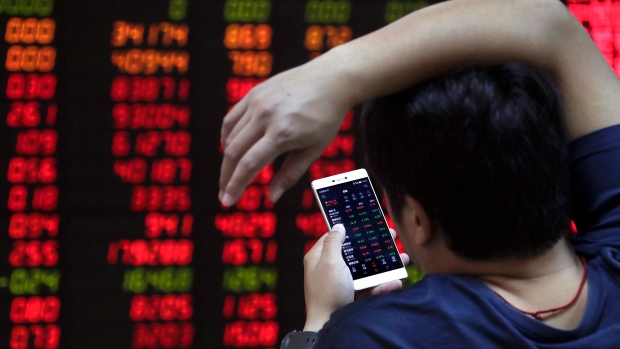Feb 16, 2018
What keeps knocking out online brokerage service?

The Canadian retail investor is back with a vengeance, forcing the online brokerage industry to scramble to keep pace with the surge in demand. Volumes at brokerages operated by the big banks have more than doubled since late December, straining existing infrastructure and causing intermittent outages at the likes of RBC Direct Investing and TD Direct Investing.
The flurry of trading came out of left field on Dec. 29, according to Paul Clark, the President of TD Direct Investing, easily surpassing one of the busiest days on record for the online brokerage.
“If you look at Brexit, which was one of the largest trading days on memory, and then you look at the 29th, we would have seen volume - depending on the product – two-to-three times the size of the Brexit volume,” Clark said in a telephone interview. “Brexit, it was a one and done: You saw a spike in trading, and then it returned to normal. This wasn’t the case with what started in late December.”
TD has been beefing up its platform, allocating more resources to keep up with activity. Clark said TD Direct Investing isn’t going to bank on retail investment activity returning to historical norms, instead ensuring the brokerage can not only keep up with the current flows, but get ahead of any potential increases.
“This has become less of a stress and more of a new norm,” he said. “We’ve significantly increased the size of the capability of our platform, we’ve increased mobile capability, desktop capabilities.”
“We’re treating this activity today as if it’s the benchmark.”
Part of the problem, according to veteran industry analyst Glenn LaCoste, is that the online brokerages are not designed to process trades and inquiries from the entire user base all at once. LaCoste, the President and Chief Executive Officer of Surviscor, said the intense interest in not only trading, but checking quotes amid pronounced market volatility likely pushed the online platforms over the edge.
“You’re not expecting everyone to show up all at once. It’s like everyone showing up to the gym at the same time, and realizing there aren’t enough exercise bikes to go around,” LaCoste said in a telephone interview. “I’m not saying it’s acceptable that people are being left unable to trade, but the pipelines aren’t meant to withstand this.”
LaCoste said the brokerages will typically establish a high-water mark for trading, and then build their platform to exceed that level, but certainly not to the point where they can cope with an exponential increase in activity.
“One of the little guys said to me that they run at about 25 per cent capacity: they almost assume a busy time would be 25 per cent of the account base coming in the door,” he said. “If a smaller firm has 100,000 clients, and they’re built for 25,000 to come through the door and [if] they have more than that, well, you’re going to have a problem.”
None of the big brokerages have yet to identify a root cause of the increase in trading volume, though much ink has been spilled placing the blame on the craze in cannabis and cryptocurrency stocks. While TD’s Clark acknowledged there is intense interest in those sectors among the Canadian retail investor base, he brushed aside any assertions those two sectors pushed the brokerages to the brink.
“Through all of 2017, and I would say it was the case in 2016, the interest in investing in the retail sector has grown exponentially. I think consumers’ understanding around trading and the broader markets has grown in that amount of time,” he said. “In many ways, this is not only a cannabis story, but an investment story overall. Even backing out the marijuana stocks, we’ve been seeing record volumes.”
Clark said he suspects the ubiquity of the smartphone and innovations in desktop trading interfaces are a more likely culprit for the sustained surge in activity, as retail investors have the ability to trade at their fingertips.
“This is an engaged retail consumer who is being given the tools to actively trade in the market like never before,” he said. “Whether markets move up or down, retail investors are going to be involved in that.”





